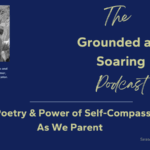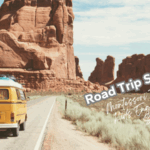Teenagers are greatly misunderstood in our culture for a whole host of reasons, but maybe the most common is that they can often seem withdrawn and disconnected. The child who a few years ago asked to be tucked in at night might now seem allergic to you. As adults, it’s hard not to worry.
Adolescents need and crave time together. As they move through the sensitive period of adolescence, they begin to individuate and seek an identity unique to themselves. As we all know, this shift can go well or can turn ugly. We all obviously want the former and fear the latter.
To ensure positive developmental outcomes for this age, it’s pivotal to recognize their value and contributions while at the same time finding and affirming the value and contributions of others.
It turns out that extended periods outdoors with peers and away from everyday distractions can help. A lot. When adolescents notice the interconnectedness of the natural world and their place in it, they often experience a calmness with a connection to a world larger than themselves.
To this end, this September, the Marin Montessori Junior High adults designed a three-day camping trip to Salt Point State Park. We call it our Odyssey Trip, and its locale changes each year, but the goals stay the same: for adolescents to disconnect from the distractions and to connect to others and a deeper sense of self.
This year, we studied coastal communities as a new 2022-23 school community. Experiencing the awe of nature with peers at the beginning of a school year sets a new precedent for how they could constructively be together, and it’s FUN!
Together, they watched the sunset over the Pacific Ocean, saw seals and starfish, and sat around a campfire. Students learned about living as a community by working together to meet the variable demands of camping while studying the communities within the forest, coastal prairies, and the rocky shore.
Activities included a scavenger hunt, a guided meditation, a forest transect lab, journaling in nature, forest bathing, reading poems, and tide pooling. Experiences such as our Odyssey Trip are scaffolded and developmentally appropriate adventures that aid the creation and re-creation of culture to which each student can mold and contribute.




A few reflections:
Forest Bathing
Gary Holsten, Teacher Junior HighThe central goal of our time at Salt Point State Park was to examine the concept of community by looking at our school, along with the unique habitats that make up the park.
Students had a two and half hour experience of the coastal forest. We used the time to explore two methods of observation.
The first was a forest transect lab, a tree tally; we counted trees in an organized way so that we could mathematically figure out the probable tree population. After the counting process, we lay down in needle and leaf litter and experienced the forest in a much different way.
This was a guided exploration, using each sense to discover what might be considered a more poetic, meditative, or emotional awareness of the forest. This latter technique has become known as “Forest Bathing.”
While students were in a state of calm, the forest session was finalized by sharing the life and teachings of Dr. Suzanne Simard, a professor of forestry at the University of British Columbia who has been instrumental in the discovery of the deep interconnectedness of the entire forest community – the plant and fungus populations that support each other in remarkable ways.
After the trip, a Junior High student wrote a poem that she then recorded over video images. Her words speak to the deep connection she feels with the natural world.

Bill is a passionate educator with over a quarter-century of teaching experience. At Austin Montessori School in Texas, Bill served for 15 years as a guide and as the Administrative Coordinator for their Adolescent Community. His teaching experience includes working with various age groups and in a variety of settings. In Breckenridge, Colorado, he taught at both Colorado Mountain College and Summit High School. Bill also spent one year as an English instructor at Interlingua in Guadalajara, Mexico. Bill has also served as a bilingual pre-k and 4th-grade teacher. He has a deep passion for social equality and served as the Family Literacy Coordinator for Spanish-speaking communities in Denver, Colorado. Bill earned a bachelor’s degree in English from the University of Texas at Austin and holds an AMI Montessori 12-18 diploma. Bill loves to write songs, play guitar, and spend time outside.





